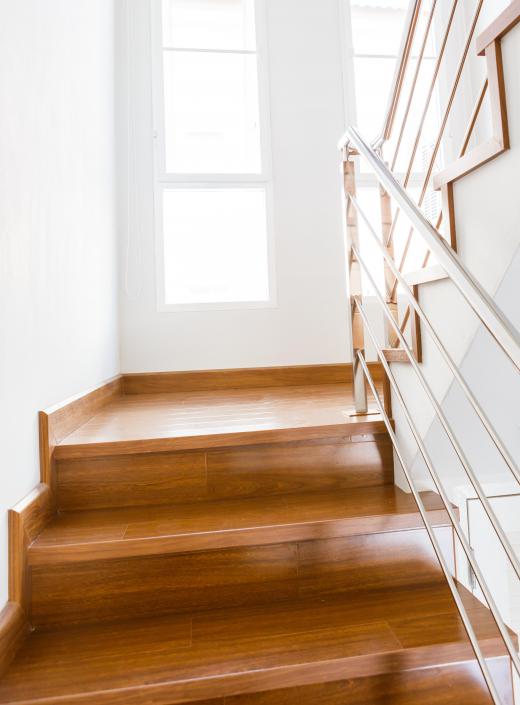A staircase jig is a template-like device used by carpenters and woodworkers to build the stringers that support staircases. It looks like a large "L" or "V," with one leg representing the riser and the other leg the tread, with a protuberance extending forward from the tread representing the bullnose on most staircase treads. The angle at which the riser and tread meet is always a right angle, and when used properly, the staircase jig creates an acute angle that defines the angle at which the stairs rise, or the pitch line. Many carpenters make their own staircase jigs, usually of wood, but they are available commercially as well, in wood, plastic, or metal.
The treads on most staircases are usually the same depth unless a landing is involved, and the risers should be of a uniform height, considerations addressed by the use of staircase jigs. A simple staircase consists of a series of treads that are supported by risers, which usually run the width of the tread. Risers are set at a right angle to the tread surface, and are generally set back 1 inch (2.54 cm) or so from the front of the tread.

Most staircases have two stringers to support the treads and risers, one at either side. One kind, called a closed stringer, is a wide board into which horizontal and vertical grooves have been routed for the snug insertion of treads and risers. A cut stringer is long wide board with a series of large notches cut into it, to which risers and treads are attached.
A carpenter using a staircase jig sets the depth of the tread and the height of the riser one time only, on the jig itself, and then transfers those dimensions to a cut stringer for any number of steps, so that each of the steps is absolutely identical to each of the others. After setting stops on each leg of the jig, the carpenter clamps the jig to the stringer board and scribes a line on the board using the jig as a guide. After cutting along the scribed lines, the carpenter uses the jig to lay out the guidelines for the next riser and tread. More experienced carpenters will first lay out all the cuts before making the first one. The stringer is a framework upon which the treads and risers are set, and the treads and risers themselves must also be cut with care to ensure uniformity.
A closed stringer can also be made using a staircase jig, by scribing the outline of the groove and then using those lines to clamp boards used to guide the router. Another approach is to create a router template from plywood, cutting out the outline of a staircase jig. The template itself is clamped securely to the stringer board and used as the router guide.
